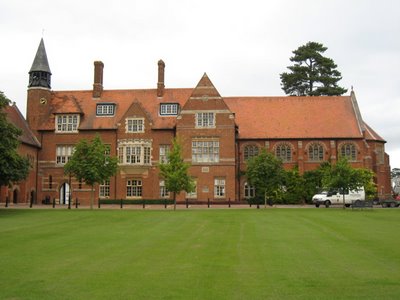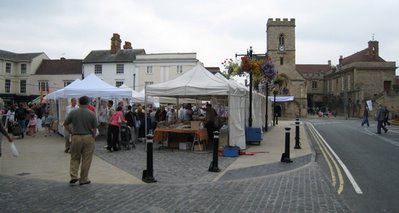
My son’s school dates back to 1100 and enrolls 800 boys aged 11 to 18. Less than a quarter of the children board, and those are mostly from Asia, so they are set up for foreign students. There are few, if any, Americans. My English husband was thrilled to see the front lawn was a cricket pitch. The campus quads are arranged around extensive athletic grounds, but the emphasis is firmly on academics. The setting is a market town even older than the school.

A traditional English public (meaning private in American) school, it is known for being academically rigorous. It is a feeder school to Oxford and Cambridge Universities, the ivy-league of England. Unlike the ivies, these top universities are heavily subsidized by the state despite the fact that only half of the students come from state (meaning public in American) schools. University entrances are based on examination results and only a few schools claim most of the Oxbridge places, a system that reinforces privilege and class. A recent report revealed that only 100 schools account for a third of Oxbridge undergraduates, most were private.
To apply to his new school, my son sat two days worth of exams that were like LSAT’s crossed with Math SAT’s and an English AP. He had to analyze a poem about a nostalgic father watching his son play cricket that confounded him, but my son must have aced the essay on emerging technology. We depend on him to program our i-pods. The exam had to be “invigilated” by the headmistress of his school.
Back in Maine, we moved our son to private school when his elementary school abandoned ability grouping and had not yet started up a Gifted and Talented program. During his final year, I came in and taught an advanced math group, but I’m no mathematician and his supplemental education left little time to work myself. His small private school in Maine emphasizes academics and the arts with a laid back, welcoming atmosphere.
Before starting school in England, my son had to shed his t-shirts and cargo pants. He couldn’t have called them pants in England anyway – that’s the word for underpants, also called knickers for a girl. We found the campus uniform shop next door to the tuck (snack) shop. My son was outfitted in navy blazer, grey trousers, black lace-up shoes, blue shirt and striped tie, also rugby kit.
Each house has a distinct tie, and his is maroon and grey, reminding me of Gryffindor in Harry Potter. The house system creates community and allows students to compete for more than themselves. Individuality is not encouraged, and the uniform reinforces this message. We wanted our half English son to get a true British experience like his father had at Pangbourne before it went co-ed.
I was worried how the other kids would receive a lone American given how unpopular the war in Iraq is here. No worries. Our 13-year-old son was an instant hit after reassuring the older boys that American cheerleaders do indeed fall for the British accent. In case you’re wondering, I was never a cheerleader.
The school day is 8:30-5:00 Mondays-Fridays and 8:30-1:00 on Saturdays, but the weekdays include an hour of afternoon sports or activities. They all do community service, and my son chose cross-country and chess. He is less than impressed with the long day but is enjoying his new classes like physics and chemistry enormously. The campus is on the opposite side of Oxford from us so he takes the school coach.
If only there was a bus to his sister’s state school, but we are getting very fit biking. We decided to withdraw my daughter’s petition to move to a closer elementary school since she is happy, learning well and has good friends. It is a very small school with only one class per year. Yet another transition would be stressful, and there is nothing wrong with the school itself, just the system that reinforces inequities and results in difficult commutes.
We couldn’t have picked two more different school experiences for my children in England. Between them, we are witnessing the full gamut of British education.
2 comments:
I am surprised that only one third of Oxbridge students come from 100 schools. Given the U. S. population, 400 schools would be an equivalent number. I am sure that graduates of "the 400" comprise at least a third of the classes of our Ivy league and other leading universities.
Love the blog. Thanks!
My name's Rachel, and I just moved to Maine. Can't wait to pick up your book.
http://youtube.com/watch?v=gN4nnNz-sVY
Post a Comment